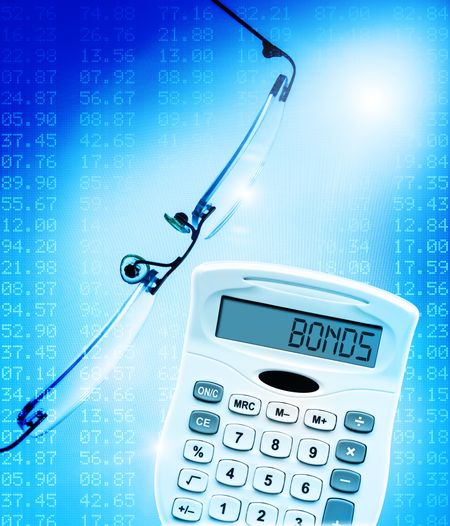Technical Analysis: Stock Tips From the Charts
Some liken it to crystal-ball gazing, but defenders insist technical analysis can help investors spot important market trends.


To analysts who make calls on the stock market based on the state of the economy, corporate profit prospects, industry trends and the like, divining the direction of share prices by poring over charts to detect patterns might as well be reading entrails. To its detractors, technical analysis is little more than mumbo jumbo. What’s a head-and-shoulders pattern, anyway? Sounds like shampoo. What does the salacious-sounding rounded bottom portend? The spooky death cross? And let’s not forget the Fibonacci retracement—an esoteric technique for gauging market moves that uses a mathematical sequence found in everything from the swirl of a pine cone to the path of a hurricane.
Technical analysis is a big tent. It can be used to analyze any type of market or security—bonds, commodities, currencies, you name it—although we’ll focus on stocks here. The tent has enough room to accommodate complex computations and wacky Wall Street-isms, such as the hemline indicator (the shorter the skirts, the higher the stock market) or the more conventional-sounding presidential cycle (election years are bullish). It combines some of the systematic rigor of quantitative analysis—a numbers-based methodology characterized by the use of trading algorithms—with insights from human psychology and crowd behavior that form the foundation of behavioral finance. In its simplest form, technical analysis is the study of supply and demand as expressed in a stock’s price.
Whether stock charts can really clue you in to what the market will do next depends on whom you ask. Technical analysis has frequently struggled for acceptance, and yet a number of Wall Street’s best and brightest incorporate it into their strategy. But investors don’t have to choose sides; those interested in technical analysis will find that it works best when it’s part of a holistic look at the market. “I think every investor can benefit from a rudimentary understanding of technical analysis,” says Sam Stovall, market strategist at S&P Capital IQ. “Fundamentals tell you why, while technicals tell you the when and how far.”

Sign up for Kiplinger’s Free E-Newsletters
Profit and prosper with the best of expert advice on investing, taxes, retirement, personal finance and more - straight to your e-mail.
Profit and prosper with the best of expert advice - straight to your e-mail.
The practice of technical analysis goes back millennia, as evidenced by Babylonian price records, Greek market-sentiment assessments and Roman seasonality patterns. Modern-day methodologies can be traced back to Charles Dow, creator of the first Dow Jones averages and founder of the Wall Street Journal. “Ever since we’ve had organized financial markets, investors have plotted prices over time,” says Andrew Lo, coauthor of The Evolution of Technical Analysis, hedge fund manager and finance professor at the Massachusetts Institute of Technology. From those price plots emerge patterns and geometric structures that allow us to forecast the direction of the market or of an individual security. “These are things that we all respond to,” says Lo.
Well, not everyone. Warren Buffett famously dissed technical analysis, quipping that he realized it didn’t work when he turned a stock chart upside down and didn’t reach a different conclusion. Andreas Clenow, chief investment officer of Zurich-based Acies Asset Management, compares technical analysis with “quasi-religious numerology.” Says Clenow: “All these funny names for patterns, such as white soldiers, black crows, spinning dragons—I think I just made that one up—add to the feeling that we can understand the market. It really doesn’t work like that.”
Despite a rocky relationship with the financial establishment, technicians are nonetheless a big part of it. “There’s not a single portfolio manager, trader or analyst who doesn’t look at charts every day,” says Craig Johnson, senior technical strategist at Piper Jaffray & Co. and current president of the Market Technicians Association (MTA). One market-beating newsletter that incorporates technical analysis into its recommendations is InvesTech Research. Its recommendations returned an average of 8.9% annualized over the past 15 years through November 30, according to the Hulbert Financial Digest, compared with just 5.9% annualized for the broad Wilshire 5000 Total Market index.
Why it’s useful. Technical analysis is based on statistics, not magic, says David Aronson, author of Evidence-Based Technical Analysis. Consider one of his favorite data points, the moving average, or the average closing prices for a stock or an index for a given period, plotted over time. The interplay of short- and long-term moving averages can be telling. When the 50-day moving average falls below the 200-day average, it forms what’s called a death cross, a bearish signal; when the 50-day average climbs above the 200-day average, it forms a golden cross, which is considered bullish. Data going back to 1896 show that anytime the 50-day moving average is below the 200-day average, the probability of a bear market is 36%, up substantially from a base probability of 18% in the normal course of things. As long as the 50-day average remains above the 200-day average, the probability of a bear market drops to 8%. Those odds hardly guarantee that you’ll bat 1,000 with your market calls. “But saying that technical analysis is not perfect is not the same as saying it has no value,” says Aronson.
[page break]
Investors who ignore the charts get only half the story, says MTA cofounder Ralph Acampora, who is often referred to as the godfather of technical analysis. “It’s naive to think that because you know what a company is doing you know what its stock is doing,” he says. Let the fundamentalists assess the impact of regulation and the talents of the CEO as well as make earnings forecasts. Technicians will tell you whether fear or greed is holding sway. Does trading volume indicate that money is flowing in or out? Are prices charting higher highs or lower lows? Says Acampora: “What makes anything move? Buyers and sellers. We’re watching the herd move.”
It’s the herd that makes technical analysis so momentum-focused, seeking to identify trends and making judgments about when they will reverse. For example, the head-and-shoulders pattern (one bump flanked by two smaller ones) can signal that an upward trend is ending, as well as indicate how bad the subsequent drop will be. After tracing out the pattern, says Stovall, the stock market usually drops by the number of points represented by the distance from the shoulders to the top of the head.
You can apply most techniques to broad market indexes, sectors or individual stocks. But keep it simple. Find bullish or bearish trends by drawing a line connecting price highs or lows over time. Higher lows are bullish; lower highs, the opposite. When a stock is seesawing, draw horizontal lines at where it reverses course to see where buyers see value and sellers don’t—known as support and resistance levels. Find the relative strength of stocks (or sectors) in comparison with the market by dividing their price by the price of Standard & Poor’s 500-stock index and tracking the ratio.
Computing power makes what was once a laborious exercise a breeze. Several Web sites offer free access to charts, technical indicators and educational material. Top picks from the American Association of Individual Investors include StockCharts.com, TradingView.com and FreeStockCharts.com.
What are the technical indicators telling their followers now? The picture the charts are painting is decidedly cautious, despite the market’s late-fall strength. On the plus side, a w-shaped, double-bottom pattern formed when the S&P 500 fell to about the 1870 level in late August, then found support at roughly that level again in late September.
But the market remains problematic, says Louise Yamada, of Louise Yamada Technical Research Advisors. An indicator she watches gave a sell signal in April—as it did in 2000, 2008 and 2011. “It could turn around like it did in 2011,” she says, but other red flags remained in early December. Large-company stocks are rallying, but small-company stocks are lagging. The Dow Jones transportation index isn’t keeping pace with the Dow Jones industrial average. The number of stocks hitting new highs, as well as the number of shares advancing relative to the number declining, point to a weakening market even as indexes gain.
Investors needn’t throw in the towel, though. “In 2016, I think we can break out of the range we’ve been in,” says Johnson. In the meantime, his analysis of the relative strength of market sectors suggests that investors should focus on financials, health care stocks and companies that make nonessential consumer goods. Johnson, who also looks at fundamental factors, says that using one form of analysis and not the other is akin to playing the piano with one hand. Moreover, he says, charts don’t lie. “You can restate earnings, and estimates can change,” he says. “At the end of the day, prices are fact. That’s your truth.”
[page break]
What technical analysts look for
The terms below are common parlance in technical analysis:
Advance-decline line. Tracks the difference over time between the number of stocks rising on a given day and the number falling to measure how broad-based a market move is. An A-D line moving opposite to an index can signal a change in market direction.
Fibonacci sequence. Constructed by adding the first two numbers to arrive at the third (1, 1, 2, 3, 5, 8…). As the chain continues, the ratio of each number to the previous one converges toward the “golden” ratio of 1.62. The ratio, its inverse and other derivations are used to determine price floors or ceilings when a security reverses course following big moves up or down.
Moving average. An average of prices for a certain period, plotted over time. For example, a 50-day average begins by averaging closing prices for a stock or an index over the previous 50 days. The next day, the calculation is repeated, and so on. The result is a smoothing of a security’s performance. The 50-day moving average is often compared with the 200-day moving average.
Relative strength. Compares the performance of stocks (or sectors) by dividing one’s price by another’s and plotting the ratio. For example, divide a stock’s price by the value of the S&P 500; a rising ratio indicates a stock’s strength relative to the market overall.
Rounding bottom. Indicates a transition from a bearish to a bullish trend. Also known as a saucer bottom.
Sentiment indicator. Tracks the relationship between bullish and bearish opinions among investors. Sentiment is a contrary indicator. For example, extreme bullishness often indicates a market top.
Get Kiplinger Today newsletter — free
Profit and prosper with the best of Kiplinger's advice on investing, taxes, retirement, personal finance and much more. Delivered daily. Enter your email in the box and click Sign Me Up.

Anne Kates Smith brings Wall Street to Main Street, with decades of experience covering investments and personal finance for real people trying to navigate fast-changing markets, preserve financial security or plan for the future. She oversees the magazine's investing coverage, authors Kiplinger’s biannual stock-market outlooks and writes the "Your Mind and Your Money" column, a take on behavioral finance and how investors can get out of their own way. Smith began her journalism career as a writer and columnist for USA Today. Prior to joining Kiplinger, she was a senior editor at U.S. News & World Report and a contributing columnist for TheStreet. Smith is a graduate of St. John's College in Annapolis, Md., the third-oldest college in America.
-
 Stagflation: What It Is and Why Retirees Should Care
Stagflation: What It Is and Why Retirees Should CareStagflation — the economic bogeyman of the 1970's — may return to the US. Here's what it could mean to your retirement.
By Donna Fuscaldo Published
-
 Why Losing Your Job Could Be the Best Opportunity to Plan Your Future
Why Losing Your Job Could Be the Best Opportunity to Plan Your FutureAmid this uncertainty lies an opportunity for strategic reassessment and personal growth.
By Mario Hernandez Published
-
 Why Is Warren Buffett Selling So Much Stock?
Why Is Warren Buffett Selling So Much Stock?Berkshire Hathaway is dumping equities, hoarding cash and making market participants nervous.
By Dan Burrows Published
-
 7 Stocks Warren Buffett Is Buying (and 10 He's Selling)
7 Stocks Warren Buffett Is Buying (and 10 He's Selling)Warren Buffett Warren Buffett's Berkshire Hathaway sold Apple and Snowflake but picked up Ulta Beauty and Heico, among other moves in Q2.
By Dan Burrows Published
-
 Warren Buffett Adores Apple as Much as Ever
Warren Buffett Adores Apple as Much as EverBerkshire Hathaway trimmed its Apple stake because taxes are "likely" to go up "later."
By Dan Burrows Published
-
 Warren Buffett Stocks: A Look at Berkshire Hathaway's Holdings
Warren Buffett Stocks: A Look at Berkshire Hathaway's HoldingsWarren Buffett's holdings are a diverse set of blue chips and lesser-known growth bets. Here, we look at Buffett's stock picks, as well as those of his lieutenants.
By Dan Burrows Last updated
-
 6 Best Books to Buy to Start Investing
6 Best Books to Buy to Start Investinginvesting These six books will help you be a better investor.
By Coryanne Hicks Last updated
-
 6 Stocks Warren Buffett Is Buying (and 11 He's Selling)
6 Stocks Warren Buffett Is Buying (and 11 He's Selling)Warren Buffett Berkshire Hathaway initiated one position last quarter and pared bets on the financial sector, among other moves.
By Dan Burrows Last updated
-
 Bond Basics: Zero-Coupon Bonds
Bond Basics: Zero-Coupon Bondsinvesting These investments are attractive only to a select few. Find out if they're right for you.
By Donna LeValley Published
-
 Bond Basics: How to Reduce the Risks
Bond Basics: How to Reduce the Risksinvesting Bonds have risks you won't find in other types of investments. Find out how to spot risky bonds and how to avoid them.
By the editors of Kiplinger's Personal Finance Published